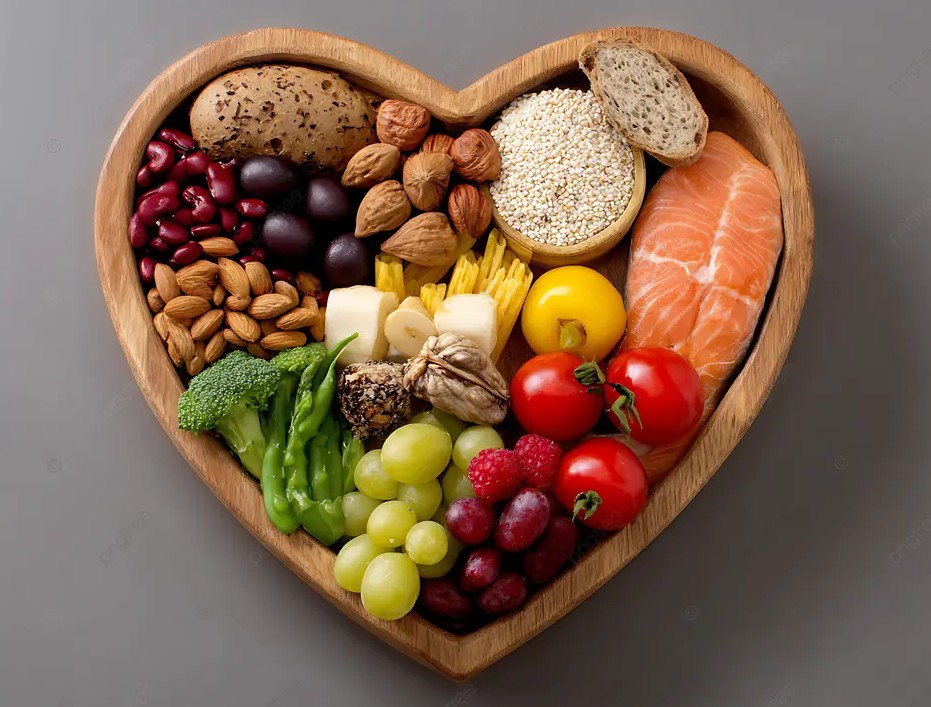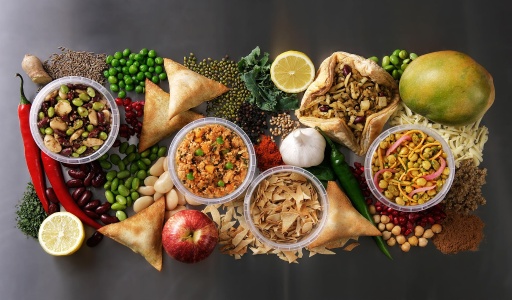Translating Your Brand for a Global Palate.
Break through language barriers and connect with new customers in the world’s most dynamic markets.
Your product’s journey to international success starts with a single, powerful step: speaking your customer’s language. Unlock your brand’s global potential with us.
Your Next Investment: Why F&B is the Surprising Engine of World Growth.
Reasons the Food & Beverage Sector is an Economic Juggernaut * The 5 Ways F&B Fuels Global Growth You Didn’t Know About.
Far beyond a simple necessity, the food and beverage sector stands as a colossal, multifaceted engine of the global economy. This definitive guide moves past the simplistic view of the industry, revealing its profound role as a primary driver of job creation, a catalyst for multi-billion dollar tourism revenue, a powerhouse of international trade, and a hotbed for innovation. We will analyze the undeniable data and compelling narratives that prove this sector isn’t just a convenience—it is the bedrock of economic resilience and growth in the 21st century. Its intricate web of production, distribution, and consumption underpins societies and propels progress in ways most people never consider. This is the ultimate guide to understanding the hidden power of what you eat and drink.
More Than a Meal: Introducing an Economic Juggernaut.
To understand the sheer scale of the food and beverage industry, you have to look at the numbers. The global market value of this sector is in the trillions of dollars, a figure that dwarfs the economies of many nations. This isn’t just about what you eat; it’s a complex ecosystem from farm to table, impacting every level of the economy. From the farmer tilling the soil to the chef in a Michelin-starred restaurant, and the logistics expert ensuring fresh produce reaches your local grocery store, the sector is a vast, interconnected network that touches every corner of the world. Its influence is so pervasive that it’s often taken for granted, yet its absence would cause an economic collapse.
The food and beverage sector economic growth is a story of dynamic change and relentless expansion. It’s a testament to human ingenuity and our fundamental need for sustenance and pleasure. This sector is the ultimate blend of tradition and modernity, where artisanal methods meet cutting-edge technology, and local flavors capture a global audience. It’s the engine that never stops, constantly evolving to meet the demands of a growing and diversifying population. The shocking truth is that this industry’s economic output and societal impact are far greater than its simple classification suggests.
Direct Economic Impact: Jobs, Revenue, and GDP.
The direct contributions of the food and beverage sector are nothing short of monumental. They are the measurable metrics that prove its vital importance to national and global economies.
Unmatched Job Creation: A Global Employer.
Few industries can rival the sheer scale of job creation in the food industry. It’s a massive employer, providing millions of jobs across a diverse range of roles. Think beyond just farmers and restaurant staff. The sector employs everyone from food scientists developing new products to marketing professionals crafting brand stories, and delivery drivers ensuring timely service. The sheer breadth of employment opportunities, from low-skill to highly specialized roles, makes it a critical component of a healthy labor market. In many developing countries, it is the largest single employer, while in developed nations, it provides a stable and consistent source of employment, even during economic downturns. This broad base of food and beverage employment statistics highlights its resilience and reliability as an economic pillar. The largest employers in hospitality are often food and beverage companies, which underscores the sector’s dominance in service-based economies.
For instance, the proven data from organizations like the USDA show that the food and beverage industry accounts for a significant portion of total employment in countries like the United States. This includes not just the primary producers but the entire value chain: food manufacturing, wholesale trade, transportation, and food services. A single restaurant, for example, creates jobs for not only its kitchen and wait staff but also for the farmers who grew the ingredients, the truckers who delivered them, the manufacturers who processed them, and the accountants who manage the finances. This multiplier effect makes it a powerhouse for employment.
Significant Tax Revenue Generator: Funding Public Services.
Every meal served, every grocery item sold, and every food-related transaction generates revenue for governments. The contributions from sales tax, corporate tax, and tourism levies are a significant stream of income that funds essential public services. This tax revenue helps build and maintain infrastructure, support education, and fund public safety. The economic impact of restaurants and food retail businesses alone contributes billions to national coffers, demonstrating the sector’s crucial role in sustaining the fiscal health of a nation. The massive food retail market size means that even small taxes on sales translate into a huge collective contribution.
Take a look at any major city’s budget. A large percentage of its sales tax and business tax revenue will originate from the food and beverage industry. Think about the taxes generated by a bustling city’s restaurant scene, the import duties on foreign delicacies, and the corporate taxes paid by multinational food conglomerates. Consequently, this consistent flow of revenue provides a stable foundation for public financing, allowing governments to invest in long-term projects and social programs. It’s an ultimate source of economic stability.
A Substantial Pillar of GDP: The Backbone of the Economy.
When you look at the numbers, the food sector’s contribution to GDP is impossible to ignore. In many countries, it accounts for a substantial percentage of the national GDP, proving that it’s a bedrock for economic stability. This is especially true for service-based economies, where the hospitality and food service industries are primary economic drivers. Whether it’s the raw value of agricultural output, the value added through processing, or the revenue from retail and food services, the food and beverage industry consistently ranks among the top contributors to national wealth. Its ability to generate continuous economic activity makes it a cornerstone of modern economies. This is the definitive answer to the question: why is the food industry important to the economy?
The catalyst for so much of a nation’s prosperity can be traced back to this sector. It provides the most basic human need, ensuring a stable workforce and productive society. It’s an engine of wealth creation that transforms raw materials into valuable products and services. For instance, in many developing nations, agriculture is the primary driver of the economy. As these nations grow, the food processing and service industries follow, creating a powerful economic flywheel that propels the entire country forward.
Your Next Revenue Stream is in Another Language.

Translation is the catalyst for global sales and brand loyalty.
The world is hungry for what you have to offer. Our service transforms your authentic, high-quality offerings into powerful global sales and enduring customer loyalty.
Don’t let a language barrier limit your growth. Our specialized translation services ensure your brand message is crystal clear and persuasive, no matter where your customers are.


Request a Customized Quote for Your Global Expansion Today.
Ready to translate your growth? Contact our experts for a free consultation on your market entry strategy and receive a quote tailored to your specific needs.
The Tourism Catalyst: How Gastronomy Defines Destinations.
The power of food extends beyond domestic economies and into the global arena of tourism. Food has become a primary motivator for travel, transforming local cuisines into international attractions.
The Rise of Culinary Tourism: A New Way to See the World.
Travelers are no longer just seeking landmarks; they are actively searching for authentic food experiences. The trend of gastrotourism has exploded, with people traveling specifically to places like Naples for authentic pizza, Bordeaux for its renowned wines, or Peru for its celebrated fusion cuisine. The economic benefits of gastronomy are clear: these travelers often spend more money and stay longer than traditional tourists, driving revenue for restaurants, local food markets, and related businesses. This shift has turned local food cultures into valuable economic assets.
Take, for example, the billion-dollar wine industry in regions like Napa Valley or the culinary tours in Southeast Asia. These experiences are built entirely around food and beverage, drawing in millions of tourists and generating immense wealth. The masterpiece of a region’s culinary tradition can become its most powerful selling point, attracting a different kind of traveler—one who is motivated by taste, not just sights.
Building a Destination Brand: Food as Identity.
A unique food scene can become a country’s or region’s identity, attracting visitors and fostering a powerful brand image. When you think of Japan, you think of sushi; when you think of Italy, you think of pasta and wine. This «food-as-identity» model increases visitor spend and length of stay, while also creating a powerful brand that resonates globally. This culinary tourism impact is a modern phenomenon that leverages culture and authenticity for economic gain. A city’s reputation can be built almost entirely on its food scene, from the street food vendors to the fine-dining establishments, cementing its place on the global tourist map.
The secret to a successful destination brand often lies in its food. A government or tourism board that invests in promoting its local cuisine is not just selling food; it’s selling an experience, a culture, and an identity. This strategy has been proven to attract higher-spending tourists and create a more memorable visitor experience, leading to positive word-of-mouth and repeat visits. The food becomes a symbol of the entire culture.
Supercharging Local Supply Chains: The Ripple Effect.
The impact of gastronomy tourism extends far beyond just restaurants and cafes. It creates a powerful ripple effect that supercharges local supply chains. When a region becomes known for a specific dish or ingredient, it drives demand for local farmers, fishermen, brewers, and food artisans. For example, a tourist traveling to Japan for authentic sushi creates a direct economic benefit for the local fishermen providing the fresh catch. Similarly, a traveler seeking out artisanal cheeses in France supports the small dairy farmers and cheesemakers in that region. This local-first approach to sourcing strengthens the entire community, providing a stable market for producers and preserving traditional methods. The money spent by a tourist cycles through the local economy multiple times, benefiting a wide range of businesses and people.
This ripple effect is a critical engine for local economic development. It creates a virtuous cycle: tourists come for the food, which increases demand for local produce, which in turn allows local producers to thrive and invest in their businesses, which further enhances the quality and authenticity of the food, drawing in even more tourists. This proven blueprint for growth shows that a strong food sector is essential for a vibrant tourism industry.
Driving Global Trade: The Export of Authenticity.
The food and beverage sector is not just a domestic powerhouse; it’s a key player in international trade. It acts as a bridge between cultures, allowing for the exchange of not only goods but also ideas and tastes.
Globalization of Palates: Creating Demand for Regional Specialties.
In the past, many regional foods remained just that—regional. However, thanks to travel, digital media, and a growing global curiosity, palates have become more sophisticated and adventurous. This has created a massive, worldwide demand for authentic regional specialties. Products like Korean gochujang, Italian Parmesan, or Mexican tequila are no longer niche items; they are in high demand in markets thousands of miles away from their origin. This global food trade is a direct result of cultural curiosity and the desire for authentic experiences, and it has opened up immense opportunities for businesses to export their local masterpieces to a global audience. The rise in demand for ethnic foods has fundamentally reshaped international commerce.
The catalyst for this shift has been technology. Social media, food blogs, and online videos have made the world’s cuisines accessible to everyone, creating a global market for regional products. As a result, businesses that once only sold locally can now dominate international markets, transforming small-scale production into a global enterprise.
National Brand Value and the «Halo Effect».
The reputation of a country’s food exports can create a powerful «halo effect» that benefits other industries. When a country is known for high-quality, authentic food products, it builds a reputation for excellence that can transfer to other sectors. For instance, the reputation of Japanese cuisine for precision and quality can positively influence consumer perception of Japanese electronics or cars. The same can be said for Italian fashion and design, which benefit from the country’s reputation for fine foods and wines. Food becomes a cultural ambassador, building a national brand value that extends far beyond the kitchen. The trust earned by a food product can be leveraged to market a country as a whole.
This phenomenon is a powerful secret to economic diplomacy. By promoting a nation’s food, a government can build a soft power that opens doors for other exports and investments. A country’s cuisine can transform its global image from one of a specific economic function to one of a rich, vibrant culture, with tangible economic benefits following.
A Hotbed for Innovation and Entrepreneurship.
The food and beverage sector is far from a static, traditional industry. It is a dynamic and innovative space that is constantly evolving, driven by new technologies and entrepreneurial spirit.
Low Barriers to Entry: The Rise of SMEs and Startups.
Compared to many other industries, the food industry often has low barriers to entry, making it a fertile ground for entrepreneurship. This is why we see a constant emergence of small and medium-sized enterprises (SMEs), startups, artisanal producers, and food trucks. These smaller players are often the most innovative, able to pivot quickly and respond to changing consumer tastes. They introduce new flavors, concepts, and business models, from sustainable, farm-to-table restaurants to small-batch craft breweries. This vibrant entrepreneurial ecosystem keeps the industry fresh and competitive.
The ability to start small with a food truck or a home-based catering business and then scale up is a masterpiece of modern entrepreneurship. It allows individuals to unlock their potential and contribute to the economy without massive upfront capital. This agility makes the sector particularly resilient and a source of constant innovation.
Embracing Cutting-Edge Technology: The Digital Transformation.
The industry is rapidly embracing technology to improve efficiency and reach new customers. This includes the widespread adoption of e-commerce apps and delivery platforms, which have completely transformed how consumers order food. It also involves advanced sustainable supply chain tech, which helps businesses track products from farm to fork, ensuring freshness and reducing waste. From AI-powered ingredient sourcing to blockchain for food safety, the sector is leveraging cutting-edge technology to become more efficient, transparent, and resilient.
This digital transformation is a critical engine for future growth. The use of data analytics to predict consumer trends, robotics to automate food processing, and mobile apps to streamline ordering and delivery all demonstrate how this traditional sector is becoming a technology-driven powerhouse. The billion-dollar investments in food tech show that the market has recognized this industry’s potential for technological disruption.
The Future of the Food & Beverage Sector.
Looking ahead, the future of this sector is being shaped by several megatrends. First, sustainable consumption is moving from a niche concern to a mainstream expectation. Consumers are demanding transparency about sourcing, production, and environmental impact. Brands that can effectively communicate their commitment to sustainability will gain a significant competitive advantage. Second, personalized nutrition is on the rise, driven by advancements in health science and consumer data. Companies are using technology to create customized food products and meal plans that cater to individual health needs and dietary preferences. This is a new frontier for innovation and market segmentation.
Finally, the digitalization of the entire food supply chain will continue to accelerate. From precision agriculture that optimizes crop yields to automated logistics that reduce waste and improve delivery times, technology is making the industry more efficient and responsive than ever before. This includes everything from digital menus in restaurants that can be instantly updated and translated to online platforms that connect small-scale producers with global buyers. The sector is becoming a data-driven powerhouse.
Conclusion: The Indispensable Engine.
The food and beverage sector is an undeniable cornerstone of the modern global economy. Its multifaceted role as a job creator, economic pillar, tourism magnet, trade driver, and innovation hub makes it an indispensable engine for growth. It fuels economies, connects cultures, and provides the foundation for sustainable prosperity.
However, this immense economic potential remains locked without a key. The vast opportunities in global markets are often hidden behind a single, formidable barrier: language. To discover the critical catalyst that unlocks global markets and maximizes this growth, read the our article: Your Ultimate Guide to Food & Drink Translation for Global Market Entry.
From Local Flavor to Global Success: The Ingredient for Expansion.



The right words open new markets. Professional translation is the key to unlocking global growth and sharing your culinary passion with the world.

The Global Plate: Professional Translation’s Recipe for Growth.
The global appetite for authentic food and travel experiences is a multi-trillion dollar opportunity. Yet, countless businesses hit an invisible wall: the language barrier. This revealing masterclass positions professional translation services not as a mere cost, but as the most powerful strategic investment for unlocking explosive growth. We will expose the proven ROI, demonstrate how it functions as a sales and conversion catalyst, and provide an actionable blueprint for using translated content to dominate new markets, command premium prices, and build an enduring global brand. Discover how to build an enduring global brand on our Retail Translations Pillar Page.
The Global Banquet: Your Multi-Billion Dollar Opportunity Awaits.
Every year, billions of people travel, and an even larger number shop for international products online. The value of cross-border e-commerce alone is projected to reach trillions of dollars. This presents a massive opportunity for businesses ready to scale. Your product may be exceptional—your artisanal cheese, your unique craft beer, your world-class restaurant. But can your target market understand it? Can a customer in Japan read your menu? Can a consumer in Germany trust your product’s ingredients? The answer to these questions determines whether you seize this opportunity or get left behind. This is the core of translation for market entry. It’s not about being a local business; it’s about becoming a global one. To learn more about how we can help you expand your brand, visit our dedicated Retail Translation Services Page.
Why Google Translate Isn’t a Strategy: The Staggering Cost of Failure.
In a world of instant information, it’s tempting to rely on free, automated tools. However, when it comes to business, a translation mistake can be a silent killer of sales and brand reputation. The shocking truth is that a simple error can cost millions.
PR Nightmares and Brand Damage: The Price of Offense.
The internet is littered with examples of embarrassing and offensive mistranslations that have led to PR nightmares. A famous case involves a major beer brand whose slogan, when directly translated, became a crude and highly offensive phrase in a foreign market. This kind of error not only damages brand image but also erodes consumer trust and can lead to millions in lost sales and costly rebranding efforts. A single translation mistake can go viral, leaving a permanent stain on your brand’s reputation.
A more recent example involves a global food brand trying to market a new dessert in an Asian market. The product name, intended to sound elegant, was a near-exact match for a slang term for a highly disrespectful act. The company had to pull the product from shelves and issue a public apology, costing them millions in inventory and brand reputation. The cost of poor translation is not just a hypothetical risk; it’s a real and significant threat. To learn more about the cost of poor translation, check out our detailed article, «The High Cost of Translation Errors»
Legal and Compliance Risks: The Consequences of Mislabeling.
This is where the stakes get even higher. In the food and beverage industry, mislabeling allergens or ingredients can have dire consequences, from severe health risks to hefty fines and legal action. Regulations for food exports, such as those from the FDA in the US or the EU’s stringent labeling requirements, are complex and unforgiving. Without accurate food label translation services, you risk a product recall, public health crises, and a complete ban on entering a new market. This is a non-negotiable area where precision and expertise are paramount.
Consider the shocking truth about global food safety regulations. The EU requires specific allergen information to be clearly listed on packaging in the language of the country of sale. If a brand fails to accurately translate this information, it’s not just a marketing problem; it’s a legal one. The fines can be substantial, but the real cost is the loss of consumer trust. Proven case studies show that brands that fail to meet these requirements often struggle to recover.
The Silent Killer of Sales: Losing Trust and Conversion Rates.
Even a non-offensive but clumsy translation can destroy trust. If your website, menu, or packaging uses awkward, unnatural language, it signals a lack of professionalism and care. Consumers who find your brand through multilingual SEO for food brands are looking for a trustworthy source. When they encounter poor grammar or nonsensical phrases, they’ll likely assume the product quality is just as low. This cost of poor translation silently erodes conversion rates and makes it impossible to command premium prices.
Think of it this way: a potential customer is looking at a menu in their native language, and an item is described as «Boiled Cow’s Head with a Face.» While technically accurate, it’s not an appetizing description. A professional, culturally-aware translation would render this as «Classic Beef Cheek Stew,» which sounds delicious and authentic. This is the secret to conversion—speaking the customer’s language in a way that resonates emotionally. You can find a more in-depth discussion on our Professional Translation Services Pillar Page
Unlock Premium Value Through Perfect Translation

Elevate your brand from a commodity to a premium, must-have experience.
We translate your brand’s unique story into an emotional connection with international customers, justifying a premium price.
This process builds a loyal global customer base by transforming your product from a commodity to a must-have experience.


How Operational Translation Enables Flawless International Expansion.
Ensure consistent brand integrity and a unified customer experience in every country.
From training manuals to safety protocols, we translate the essential documents that enable your brand to scale seamlessly and successfully worldwide.
Translation as Your Growth Engine: The 4 Catalysts of ROI.
Professional translation is not an expense; it is a strategic investment that generates a powerful return. It is the secret catalyst that fuels every aspect of your global expansion. For a deeper discussion on this topic, please visit our Professional Translation Services Pillar Page.
1. The Market Access Catalyst: Your Key to Regulatory Compliance.
Accurate translation is the key that unlocks the door to new markets. It is the first step in ensuring your business can legally operate and sell its products abroad.
- Translating labels for EU, FDA, and other regulatory bodies: This is the most fundamental requirement for exporting. Expert retail translation services ensure your packaging meets all legal specifications for ingredients, nutritional information, and allergens, saving you from costly legal headaches and product rejections. By getting this right, you can unlock new revenue streams in previously inaccessible markets.
- Localizing business plans and manuals for franchising and investment: If you’re looking to expand through franchising or attract foreign investment, your business plans, training manuals, and legal documents must be perfectly translated. This builds credibility and trust with potential partners. A well-translated business plan shows you are serious about expansion and have a proven blueprint for success.
2. The Sales & Conversion Catalyst: Your Silent Salesperson.
Once you have market access, professional translation becomes a powerful sales tool. It’s not just about compliance; it’s about connecting with your customer on an emotional level and driving them to purchase. This is where your investment in professional translation services truly shines, providing an undeniable return on investment.
- Menu Translation Services: How Evocative Descriptions Increase Average Order Value: A poorly translated menu can be confusing and unappetizing. Conversely, a professionally translated menu, written by a culinary expert who understands the nuances of local cuisine and language, can make dishes sound delicious and authentic. When a dish like «Grandma’s Meatball Soup» is translated to «Soup with Ground Meat from Old Woman,» you’ve lost the sale. But when a descriptive, well-localized phrase is used, it can increase curiosity and, consequently, the average order value. Menu translation services go beyond simple word-for-word exchanges; they evoke flavor, tradition, and experience.
- Retail Packaging Translation: Winning the Battle on the Crowded Shelf: In a foreign supermarket, your product is competing with dozens of local brands. Your packaging is your only salesperson. If the labeling is clumsy, generic, or incorrect, it will be overlooked. However, clear, accurate, and culturally-adapted retail packaging translation builds trust. It tells the customer that you care about their market and that your product is of high quality. It’s the difference between a product that sits on the shelf and one that ends up in the shopping cart.
- Multilingual SEO: Capturing High-Intent Customers Searching Abroad: Customers searching for a product in their native language are far more likely to make a purchase. If your website is only in English, you are missing out on millions of potential customers who are using search engines in their native tongue. Expert localization and multilingual SEO for food brands ensures that your website and products appear at the top of search results in different countries, capturing high-intent customers who are actively looking to buy what you offer. This is a direct pipeline to new revenue streams. You can find more information on our Retail Translation Services page.
3. The Brand Equity Catalyst: Commanding Premium Value.
Professional translation elevates your brand from a commodity to a premium product. It’s a strategic investment that pays dividends in loyalty, trust, and pricing power.
- Using Storytelling to Transform Commodities into Luxury Experiences: Every food product has a story—from the region it comes from, to the history behind its recipe, to the artisanal method of its creation. Translating this story effectively allows you to transform a simple food product into a luxury experience. A «potato chip» becomes a «hand-cut crisp from local, heritage potatoes.» Professional translation services help you build this narrative, allowing you to charge a premium for your product’s authenticity and heritage.
- Building Trust and Loyalty with Discerning International Customers: When customers see that a brand has taken the time and effort to communicate in their native language, it creates a powerful bond of trust. This builds loyalty and encourages repeat business. For example, a tourist who finds a fully translated, easy-to-read menu will have a better experience and is more likely to leave a positive review, attracting more customers. This is particularly vital in the travel and tourism sector where positive word-of-mouth is key.
4. The Operational Excellence Catalyst: Scaling with Consistency.
Beyond sales and branding, translation is a key component of a streamlined, globally scalable business.
- Translating Training Manuals and SOPs for Flawless Global Operations: If you are expanding a chain of restaurants or food retailers through franchising, your training manuals and standard operating procedures (SOPs) must be perfectly translated. This ensures consistency in food quality, service standards, and brand experience across all locations. A poor translation can lead to costly operational errors and damage your brand’s reputation.
- Streamlining International Supply Chains and Logistics: From ingredient sourcing to international shipping, clear communication is essential. Translating contracts, shipping manifests, and a host of other logistical documents ensures that your global supply chain operates without a hitch. This is where specialized translation for market entry pays off, preventing costly delays and logistical nightmares.
Beyond The Basics: Advanced Localization For A Competitive Edge.
To truly dominate in new markets, you need to go beyond standard translation. This is where advanced localization strategies come into play, allowing you to connect with your audience on a deeper, more meaningful level.
- Website Localization and UX/UI Adaptation: Your website is your digital storefront. Website localization services adapt not just the words, but the entire user experience (UX) and user interface (UI) for a new cultural context. This includes changing a site’s layout to match different reading styles (e.g., from left-to-right to right-to-left), adapting imagery to be culturally relevant, and localizing payment gateways. A website that feels native to the user—not just a translated version—builds immense trust and increases conversion rates.
- Localizing Digital Marketing and Social Media Campaigns: A marketing campaign that works in one country may fall flat in another. The humor, emotional triggers, and even the social media platforms themselves can vary. A strategic partner in localization services for hospitality and retail will help you adapt your digital marketing campaigns, including social media content, email newsletters, and online ads, to resonate with local audiences. This ensures that your marketing investment generates a strong ROI.
- Transcreation: The Art of Reimagining Your Brand Message: Transcreation goes a step beyond translation. It is the process of completely re-creating your marketing message for a new culture, ensuring it has the same emotional impact as the original. For a slogan or a tagline, this is a game-changer. It’s about preserving the intent, style, and tone of your message, not just the words. This is a critical service for brands looking to launch memorable, impactful campaigns in new markets. For more information, check our Retail Translation Services Pillar Page.
Your Blueprint for Global Dominion: How to Invest in Translation Wisely.
Choosing a translation partner is a critical business decision. It’s about more than just finding someone who speaks the language. It’s about finding a strategic partner who understands your industry, your goals, and your target market.
- Why Subject-Matter Experts (Culinary, Marketing) are Non-Negotiable: A good translation goes beyond direct word conversion. It requires a deep understanding of the industry’s specific terminology and cultural context. For food and beverage, this means working with translators who are experts in culinary terminology, food science, and marketing localization.
- The Value of a Strategic Language Partner vs. One-Off Projects: Don’t treat translation as a one-off project. The most successful global brands work with a strategic language partner who can handle everything from menu translation to legal document localization. This ensures consistency and a cohesive brand message across all languages.
- The ROI of Professional Translation Services: The return on investment is often much higher than you’d expect. By preventing costly errors, increasing conversions, building trust, and enabling market access, professional translation can pay for itself many times over. The ROI of professional translation is not just about avoiding a negative outcome, it’s about actively driving business growth.
- Oris Translation’s Proven Process: Our approach begins with a comprehensive analysis of your brand and target market. We then match you with a team of linguistic and industry experts who will work to deliver a solution that not only translates your words but also amplifies your brand’s message and value. To delve deeper into this topic, refer to our Professional Translation Services Pillar Page.
Conclusion: Translate Your Ambition into Global Revenue.
The world is hungry for what you offer, but are you speaking their language? The invisible wall of the language barrier has prevented countless businesses from reaching their full potential. By investing in professional translation, you are not just getting a service; you are acquiring the secret catalyst that unlocks global markets, commands premium value, and translates your business ambition into tangible, explosive revenue.
The choice is clear: either remain a local brand and miss out on a multi-trillion dollar opportunity, or make the strategic investment to dominate new markets and become a global leader. Contact our experts for a free, no-obligation consultation on your market entry strategy today. To learn more, please see our Retail Translation Services Pillar Page.
How Professional Translation is a Catalyst for Your Business
Translation isn’t a cost; it’s a strategic investment with a measurable ROI.
Accurately translating your content is the first step toward market entry. It’s about more than words; it’s about a measurable return on your investment in every new market.
Get a Free Consultation for Your Next Project.
Whether it’s a menu, a product label, or an entire website, we have the expertise to make your international launch a success.
Ready to Translate Your Growth? Let’s Talk Strategy.
Our experts are here to help you navigate the complexities of global expansion. Share your project details, and we’ll provide a customized solution designed to meet your business goals.






